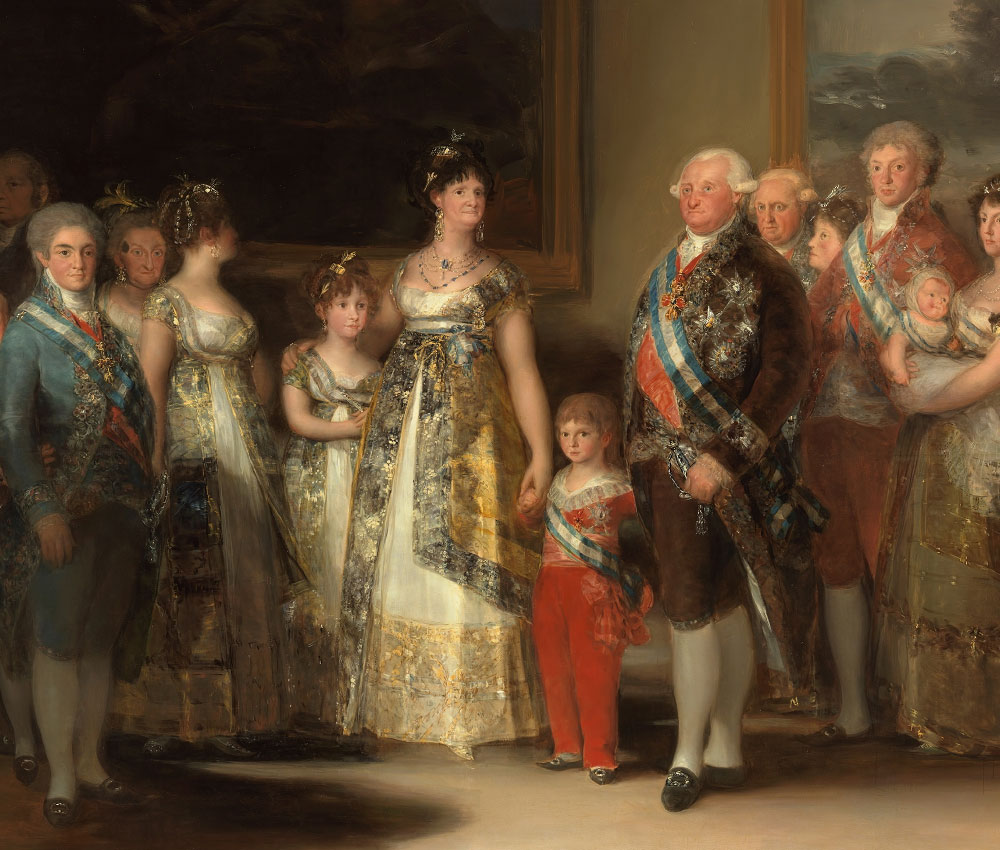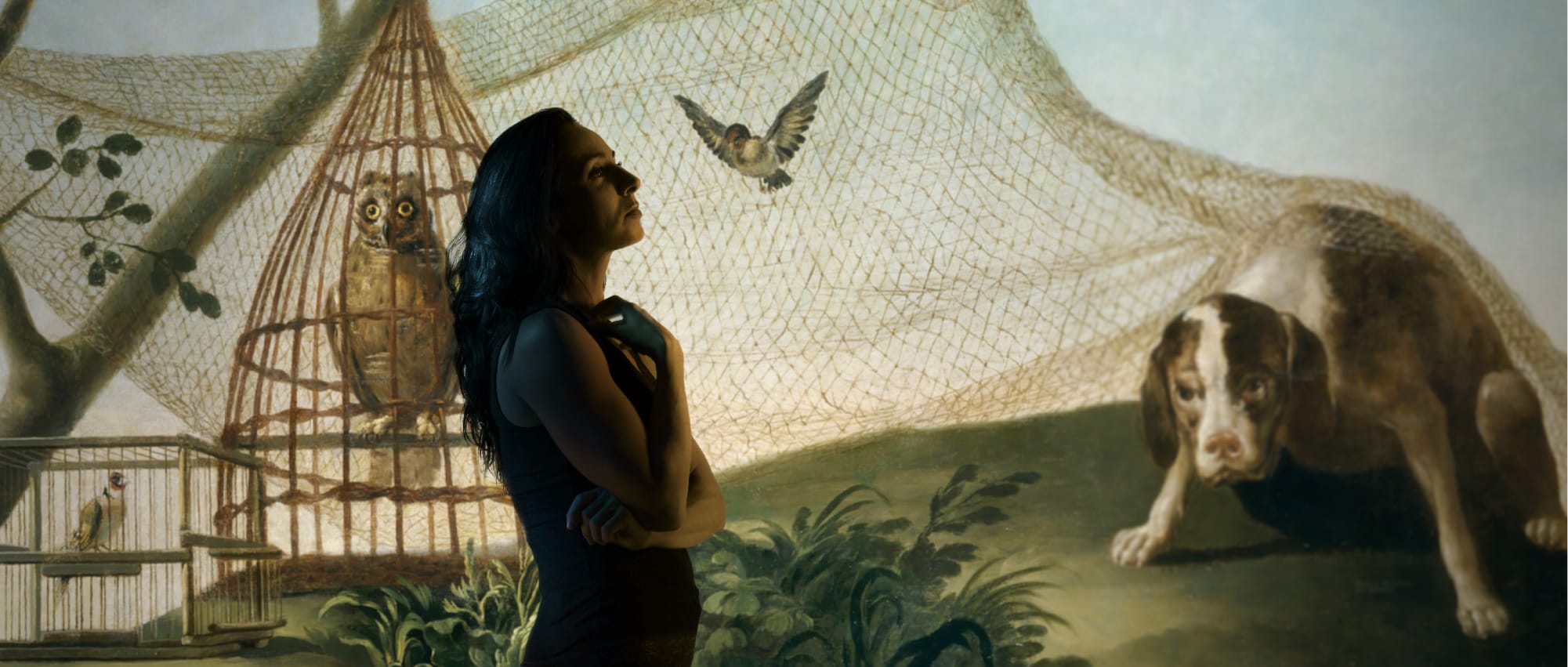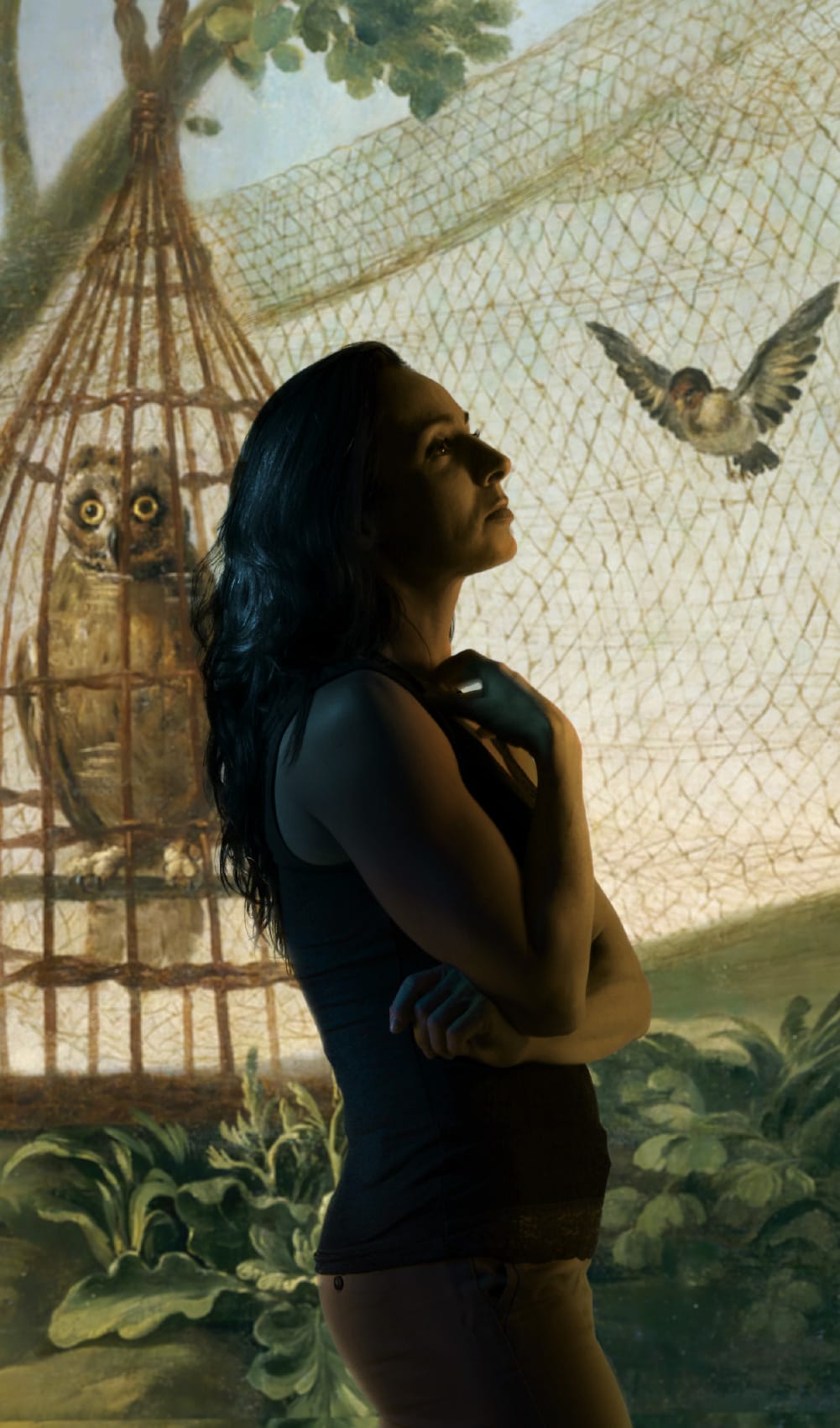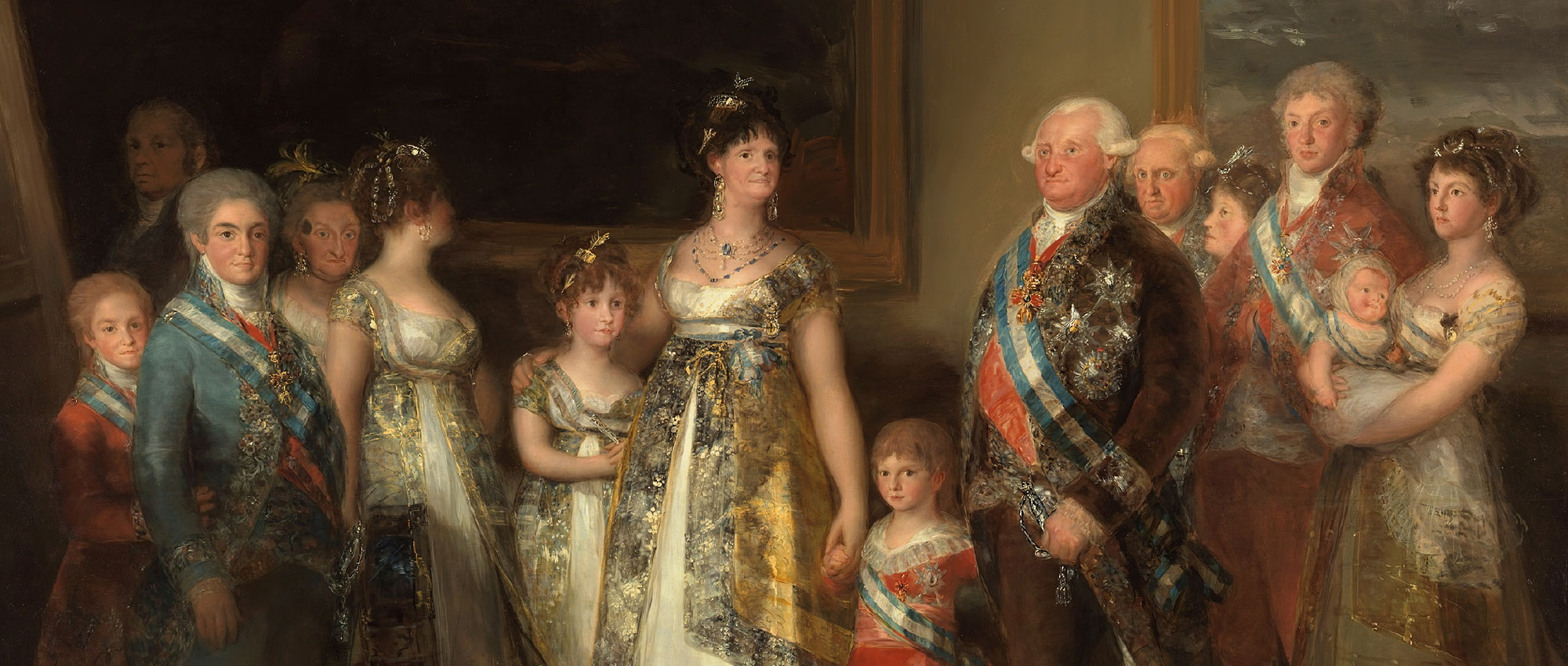
The Family of Carlos IV
Goya was King Carlos IV and Queen María Luisa of Parma’s favourite painter since their arrival to the Spanish throne in 1789. From this date on, he painted both monarchs in different formats and attitudes. Among all the paintings that he made for them, one large canvas called The Family of Carlos IV stands out, a pivotal work within Goya’s portraiture, monumental for its size, its technical mastery, its harmonious colouring, and for the veracity with which different members of the royal family are represented.
It was painted between July and December of 1800, a few months after being named First Court Painter, the highest honor that an artist could aspire to in that time.
Goya first made a few studies from life, with the model present, of each of the characters, and afterwards, he composed the entire portrait in his studio.
It is a collective portrait, a type which is not common in the tradition of Spanish portraiture, but of which there are a few examples, which, as a matter of fact, are related to different royal families beginning with Las Meninas by Velázquez, a work from which Goya took a few compositional aspects and the inclusion of a self-portrait painting in front of an easel, to the left of the composition. In this way, Goya likens himself to the Sevillian master, whom he always recognized as one of his greatest painterly influences.
Likewise, there are group portraits of the family of Felipe V, the first king of the Bourbon dynasty that reigned in Spain, such as the one painted by Louis-Michel van Loo, in the Prado Museum, or the one by Jacopo Amigoni of the court of Fernando VI and Bárbara de Braganza, which is lost today but known by an engraving. With these portraits, the kings of the Bourbon dynasty wanted to highlight their link with the Hapsburg dynasty, from which they descended directly. In the context of post-revolutionary Europe, which had witnessed the execution of the French kings, Carlos IV and María Luisa of Parma also wanted to manifest the magnificence and permanence of the Spanish line of the house of Bourbon, ensured by their numerous sons and daughters.
Thus, the center of the painting features Queen María Luisa and King Carlos IV, who appears in front, marking his importance. They are both linked by the youngest of their sons, the infante Francisco de Paula, who was then six years old. To his right, the queen embraces the infanta María Isabel, who would later be the Queen of the Two Sicilies by her marriage with King Francisco I. On the same side, with a blue suit and in the front line, we find the successor to the Spanish throne, the then Prince of Asturias, future Fernando VII. Behind, holding him at the waist is his brother, the infante Carlos María Isidro, who, years later, would dispute the throne with his niece Isabel II. To the side of Fernando is a young woman in profile who raises her head to look at the paintings in the back, a figure that has traditionally been identified with the future wife of the prince, who had not yet been chosen, which is why she appears as an anonymous face. Behind her is the infanta María Josefa, Carlos IV’s sister, and even further back Goya is painting a self-portrait in front of a large canvas. On the other side, behind the king, is the infanta María Luisa, who holds her baby, the infante Carlos Luis, in her arms. Next to her is her husband, don Luis de Borbón-Parma, future king of Etruria. Behind is the infante don Antonio Pascual, also a brother of Carlos IV, and in profile, his wife, who was also his niece, the infanta Doña María Amalia, who had died two years earlier. The infanta Carlota Joaquina, married to the future Juan VI of Portugal was missing from the portrait as she was out of the Madrid court in those dates.
In the pictures in the background, Goya painted two scenes of his own invention, as there are no works in the royal collection that coincide with them. After a restoration done in the year 2000, the scene that appears on the wall behind the queen was identified with the story of the loves of Hercules and Omphale, by which the kings were allegorically related with that demigod from classical mythology, from where the Spanish dynasty’s descendants were to have proceeded.
At the same time, in this portrait you can see the enlightened idea of affection, in which the close relationships among the different members of the royal family were promoted, especially in the upbringing of children, something clearly shown through the contact between the mothers and children or between brothers and sisters.
The work stands out, too, for the richness of the dresses, jewelry, and badges that the sitters exhibit, especially the ladies. Above all is Queen María Luisa, who is shown with a grand presence at her fifty years, despite the physical degradation that she was undergoing at the time, brought on by the twenty-four pregnancies she had endured, ten of them abortive, which caused her to lose her teeth twenty years prior and age prematurely.
It is in these dresses that one can most clearly see the liveliness of the brushstrokes and Goya’s extraordinary capacity for the treatment of light and color, something that particularly marveled viewers like the impressionist painter Pierre-Auguste Renoir, who would assert that just the possibility of seeing this painting made the trip to Spain worthwhile.


